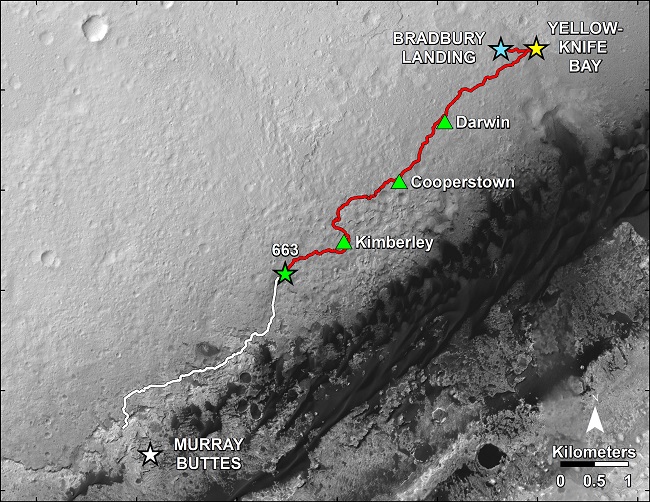The Curiosity rover. Photo via NASA
US space agency NASA’s Mars Curiosity rover marks its first Martian year today – 687 days – since it landed on the red planet, having achieved its mission of determining whether the Martian Gale Crater ever was habitable for simple life forms.
The project has been one of NASA’s most ambitious ever as the agency attempted to send its largest unmanned rover 41m kilometres to Mars. Not too long after it had landed, Curiosity came across the first signs of a riverbed that once flowed on Mars’ surface millions of years ago.
In an area known as Yellowknife Bay, the mission found examples of a previous potential for life from two mudstone slabs the rover had sampled with its drill.
Analysis of the samples revealed the site was once a lakebed with mild water, the essential elemental ingredient for life, and a type of chemical energy source used by some microbes on Earth. If Mars had living organisms, this would have been a good home for them.
The biggest challenge to date for Curiosity, and scientists alike, was when the rover sustained some wheel damage towards the end of 2013, which not only affected its speed, but also its ability to traverse some of the trickier routes.

The route Curiosity will travel
Because of this, the NASA team planning Curiosity‘s route had to make significant changes, but the rover is now on course to reach Mount Sharp. It will do this by taking a path across sandy patches, as well as rockier ground, with terrain mapping via images from NASA’s Mars Reconnaissance Orbiter.
The NASA team expects Curiosity will need to continually adapt to the threats posed by the terrain to the rover’s wheels, but does not expect this will be a determining factor in the length of Curiosity‘s operational life.
Speaking of Curiosity’s achievements so far, project manager Jim Erickson said, “We are getting in some long drives using what we have learned. When you’re exploring another planet, you expect surprises. The sharp, embedded rocks were a bad surprise. Yellowknife Bay was a good surprise.”